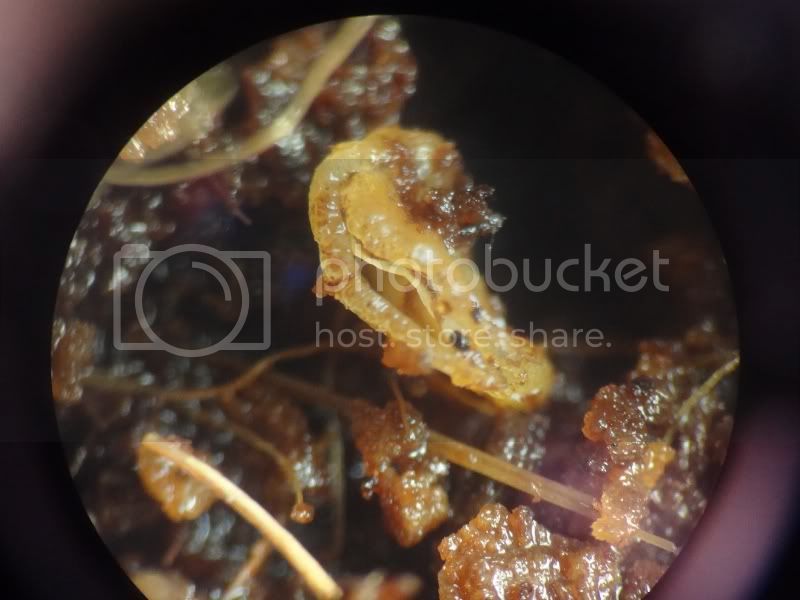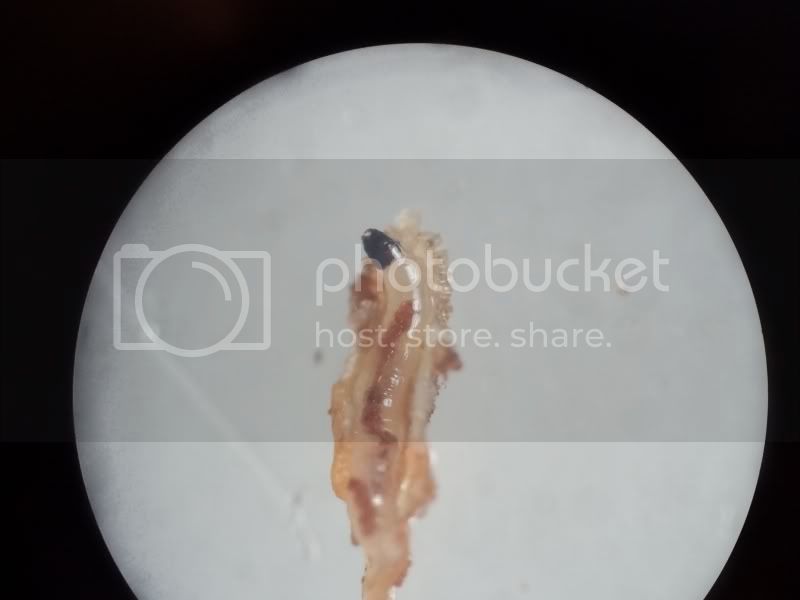-
Do you need help identifying a 🌶️?
Is your plant suffering from an unknown issue? 🤧
Then ask in Identification and Diagnosis.
You are using an out of date browser. It may not display this or other websites correctly.
You should upgrade or use an alternative browser.
You should upgrade or use an alternative browser.
Fruit fly/Fungus gnats.
- Thread starter Shorerider
- Start date
Shorerider said:Ah, I see. Do you allow all plants to gradually soak all the water up, or do you drain off any excess water after a given time?
I went out and bought some of this: http://ecoorganicgarden.com.au/products/pest-disease/eco-neem/
It was the only product that mentions fungus gnats.
Then I read on their web site that it is only approved for use on ornamentals In Australia.
Has anyone had any experience with this product?
Cheers......
I've wiped out FG with Azamax (same thing), works like a charm. Never tried it on seedlings though, so maybe half dose and a few stickies to catch the airborne?
Jeff H said:
Careful with this advice, Pythium is a real pain in the ass.
You guys do know that the fungus gnats don't have any problem finding the bottom watering holes right? I mean, they fly around looking for moist soil......
Like Chris, I had a real problem last year. This year my approach was mosquito dunks and sand and perlite (same use as sand) and lots of fly paper. No issues over the winter.
IMHO, bottom watering can be worse than top watering if the roots don't go down that far.
So top watering fights damping off?
I know they can find the drain holes but the exposed top surface is huge compared to the drain holes. I don't think anybody would recommend stopping bottom waters and start top watering.
Its good to hear all of the different schools of info.
PrimeTime said:
So top watering fights damping off?
I know they can find the drain holes but the exposed top surface is huge compared to the drain holes. I don't think anybody would recommend stopping bottom waters and start top watering.
Its good to hear all of the different schools of info.
One too many beers last night I think. I meant to say root rot, but somehow I typed pythium. They are really very similar diseases and are related, but I was specifically referring to the root rot that happens when the soil is saturated down low and can't dry out. In my experience, bottom watering too frequently can push this issue since it absolutely soaks the bottom soil.
And yes, here is nothing more annoying than seeing the fungus gnats flying out of the little drain holes. It is almost a helpless feeling since there isn't really anything you can do. That is why switched to mosquito dunks. I just top water with it and all has been good since.
I got ya. I think regarding watering either way is the difficulty dealing with seedlings. My issue was when I tried to let them dry out long enough to stop the gnats, I lost seedlings do to lack of water.
Everybody and their mother told me to stop overwatering (bottom water 2 times a week) over and over but they didn't seem to want to listen to me when I told them they died after like 6-7 days with no water...
Its a pain dealing with these bugs.
Good luck shorerider!
h202 helped a lot and could wipe them out if you use it early so don't be afraid of it, I wish I used it earlier!
Everybody and their mother told me to stop overwatering (bottom water 2 times a week) over and over but they didn't seem to want to listen to me when I told them they died after like 6-7 days with no water...
Its a pain dealing with these bugs.
Good luck shorerider!
h202 helped a lot and could wipe them out if you use it early so don't be afraid of it, I wish I used it earlier!
Is it ok to put sand over those plants that have not yet produced cotys?
In other words, are the hooks strong enough to break through dry sand?
In other words, are the hooks strong enough to break through dry sand?
That's what I thought. I've left those without a stem alone, put sand on the others and have bottom watered with the Eco-neem solution.
I haven't seen any gnats for a while but better off making sure they don't enjoy their stay.
I haven't seen any gnats for a while but better off making sure they don't enjoy their stay.
I had a FG problem a couple of years ago. Mosquito dunks fixed it. I was able to take photos, using a microscope, of FG larvae inside a pepper seed eating the pepper embryo before it had a chance to emerge from the seed shell. Nasty buggers. I'll see if I can find them.
Found them. You can see the head of the FG larvae inside the seed here:

Here's what they look like:

Found them. You can see the head of the FG larvae inside the seed here:

Here's what they look like:

I gotta get on Operation Gnat Attack. Not horribly bad (yet) but when I move a 1020 tray 2-3 adults fly up.Shorerider said:That's what I thought. I've left those without a stem alone, put sand on the others and have bottom watered with the Eco-neem solution.
I haven't seen any gnats for a while but better off making sure they don't enjoy their stay.
Planning on using peroxide but also curious about the neem. Did it work long term for you?
...and I guess maybe a dumb question, but why not hit the top with the peroxide if that's where the larvae are & the peroxide doesn't damage the plants? I understand that top watering can contribute to the gnats but wouldn't one application of peroxide counteract the negative effects of top watering? Just asking. I sure don't know.
It did seem to improve things, but I think my initial application may have been a little too strong and I saw some yellowing on some leaves. Most plants were not affected by the yellowing.
SR.
SR.
I had good success with, I believe, a one off bottom watering with a worm tea solution (literally a few cups of worm castings soaked for 20mins in a gallon of de-chlorinated water). I changed a few things at once so can't say definitively that is the solution. It is likely if there are a lot of good bacteria in a given soil sample perhaps nothing will grow to feed the larvae and attract the gnats in the first place. This coming season my seed raising mix will be 1/3 worm castings which should negate the need for worm tea.
I'm fairly certain using H2O2 will kill the micorrhizae, but I won't bet money on it. Every other forum I've read that the question has presented itself it's always been considered a no no. The thing is the most common H2O2 that is used in households, the 3% solution, decomposes pretty quickly. You can give the plants another shot of micorrhizae after a day or two and you'll be as good as new.
I was set on peroxide, as I figured mosquito dunks were probably made with some awful chemical that I didn't want to use. Upon closer inspection, I see their "approved for organic gardening," and the website says basically, "If your dog eats them, no problem- your dog could eat the whole package & it's no big deal." Made with something called BTI. Same as BT?
I assume the mosquito dunks- a product made for this specific purpose would be better than peroxide. yeah?
How do you use the mosquito dunks in this application? Break up & dissolve in water? Probably just a tiny piece of one for each 1020 flat?
I assume the mosquito dunks- a product made for this specific purpose would be better than peroxide. yeah?
How do you use the mosquito dunks in this application? Break up & dissolve in water? Probably just a tiny piece of one for each 1020 flat?
